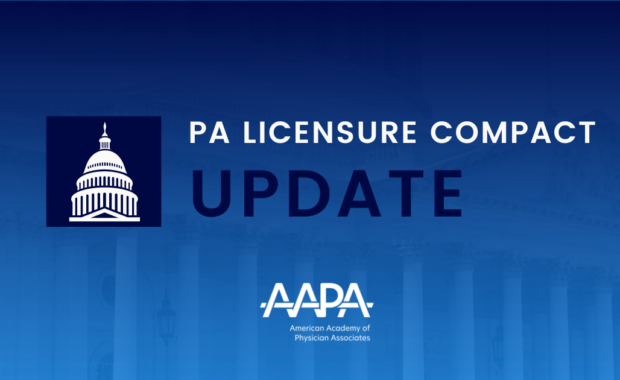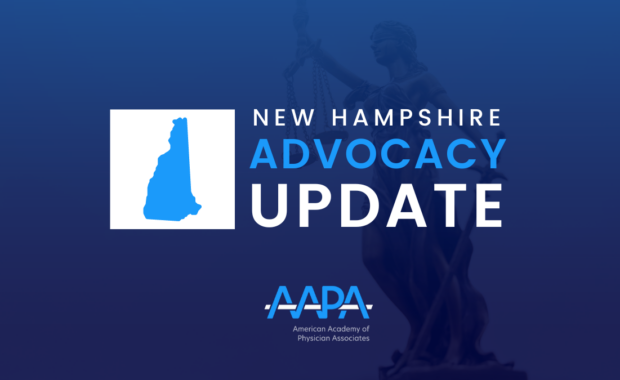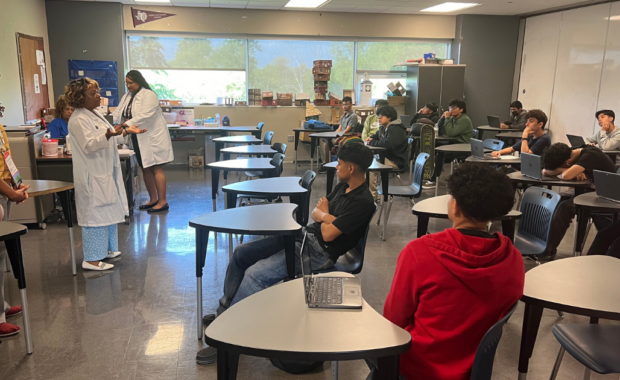Learn How Implicit and Overt Bias Impact How You Practice
Become Educated on Bias in Healthcare
October 19, 2020
By Eileen Denne, CAE, APR
Health disparities around COVID-19 and greater focus on racial justice have highlighted the need for PAs to talk about how bias can impact healthcare. Deanna Bridge Najera, PA-C, clinician consultant in Carroll County, Maryland, discusses how implicit and overt biases may impact how PAs practice during an AAPA webinar, Bias: What You Don’t Know Can Hurt You and Your Patients.

Bias impacts access to care and health outcomes
Najera thinks bias affects her patients before she sees them. “Bias is why they have delayed receiving care or did not have access and may likely have a worse health outcome,” she says. “But it’s also more subtle: rolling our eyes when we hear about ‘noncompliance’; the 70-year-old with an unrecognized opioid use disorder because no one could believe a little old white lady could have a problem with misusing her prescription meds; the new mother who dies after giving birth because her ‘not feeling right’ was dismissed as anxiety instead of a pulmonary embolism. We all have stories about bad outcomes that could have been mitigated in a variety of ways, and hopefully by better understanding how bias has a role in health outcomes we can help provide better care.”
“Disparate health outcomes based on race and ethnicity have been recognized for decades,” says Najera. “They are often attributed to broader socioeconomic forces. We are finally paying attention to the fact that even when corrected for income and education, people of color and other minorities still have worse health outcomes. We have a better understanding of the incredible impact that small ‘slights’ and more overt negative experiences can have on a person’s overall health. This webinar will help clinicians learn more about what we can do to try to reduce these inequities.”
Long-time PA leader and practitioner, Josanne K. Pagel MDiv., MPAS, PA-C, DFAAPA, executive director of PA Services for Cleveland Clinic Health System, is as passionate about this important topic as Najera. She has regularly offered a course on bias to advanced practice providers (APPs) at Cleveland Clinic.
“Bias relates to the need for quality care for each and every patient,” Pagel says. “Each patient should be treated equally, the poor like the rich, the obese like the thin, the not so beautiful like the beautiful. The majority of providers will never admit this, but if you really do a self-assessment, you may find that there were patients who you really did not want to treat as you perceived them to be a problem and you perceived their conditions as their issue, not a condition.”
 Webinar offers terminology, self-evaluation opportunity
Webinar offers terminology, self-evaluation opportunity
The webinar will help define commonly used terms as they relate to equity in care, while encouraging attendees to review how implicit and overt biases may impact how they practice. Najera reviews resources for further introspection and education and talks about ways PAs can enact changes at the practice level and/or start or support changes throughout the healthcare system.
[Top-notch CME comes with AAPA membership – join or renew today]
Pagel cites an eye-opening experience on bias in a class led by a social worker and hopes this webinar will provide the same experience for attendees. “We did some self-introspection exercises,” she says, “simple tasks such as writing down what we liked about ourselves, then writing down what we liked about our best friend and comparing them. There are multiple similarities as we like to be around those who are like us. Doing an exercise on bias and personality types opens our eyes as to how we really think but don’t realize it. This should be a webinar that PAs take every year just like patient safety.”
Learning can lead to greater equity in care
Najera believes that helping PAs learn about and incorporate new practices can lead to greater equity in care. “It can be hard to believe that systemic challenges exist that impact why a person is more likely to die of a heart attack. We often like to think it’s genetics or poor compliance or personal choices. But there are things we can do as PAs to help improve quality and health outcomes, both in the exam room and beyond,” she says.
Asked what PAs should understand about how implicit and overt biases impact how they practice, Najera says, “No one plans to be racist or provide substandard care, but that is what ends up happening if we do not face our biases head on. The development of bias, and heuristics in general, is rooted in an evolutionary necessity to be able to make rapid fire decisions. We need to understand that and make sure we are ‘checking ourselves’ in order to circumvent these unconscious decisions while at the same time continue to work on a larger system level to improve access and remove barriers to care.”
Pagel agrees that PAs need training and exposure to bias concepts. “Overt biases can and should be a career ender. The more damaging bias is unconscious bias that you don’t put out there, but still have. This impacts patients and those around us in the worst way.”
She concludes, “I strongly encourage self-introspection to really know ourselves. PAs know medicine, conditions, and treatments, but we don’t usually realize what we hold biases against. Exposure to this through exercises such as those in the webinar can really enhance us as providers and people.”
Click here for the AAPA webinar on Bias.
You May Also Like
PA Foundation Program: Preventing Prescription Opioid Misuse
AAPA Reports on Diversity, Equity, and Inclusion Efforts To Date
Reflecting on Pride Month 2020
The Case for Inclusion and Diversity in PA Cohorts
Thank you for reading AAPA’s News Central
You have 2 articles left this month. Create a free account to read more stories, or become a member for more access to exclusive benefits! Already have an account? Log in.



